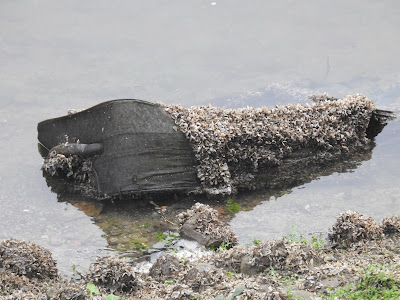A week off work and at last some quality time to out in the marvelous post-industrial landscape of the Blaenavon World Heritage Site. I've expressed my views about how important this area is as a wetland landscape previously, but as I've said its a landscape largely off the radar of most naturalists (but not all) and certainly doesn't have the same nature conservation profile as the Gwent Levels or the Wye Valley.
When out recording dragonflies and damselflies it helps to have some warm weather and for my visits this was certainly the case. My first excursion took me to the Canada Tips area, where a female four-spotted chaser and a male broad-bodied chaser obliged for photographs. Also recorded on this visit was a large red damselfly, a few blue-tailed damselfly and many common blue damselfly.
The following afternoon I took in the ponds of Garn-yr-erw and a few of the smaller ones at the top of Garn Lakes Local Nature Reserve. One particular pond supporting masses of flowering common cotton grass took up most of my time. Its a site off the beaten track and one that is only shared by motorbikers. Here several emperor dragonflies engaged in aerial sparring, others where busy ovipositioning. To my surprise I found a male black-tailed skimmer. This is not a species I've encountered in the uplands as its usually replaced by the keeled skimmer but there is some suggestion the range of this species is expanding.
At Garn Lakes there were too many people, pushing my social anxiety through its threshold, so I only took in a couple of smaller ponds on the margins. Here a number scarce blue-tailed damselfly laboured through the emerging common spike rush. Here too was a common darter, a common dragonfly but one I tend to associate as a late summer species.
My final visit was conducted in less favourable conditions. It was cold, windy with unpleasant showers, not ideal for odonata. Needless to say there were few about. That said, when scrambling down a bank to shelter from a sharp shower I found, by chance, a golden-ringed dragonfly perched motionless from the woody stem of a bilberry bush.





















































